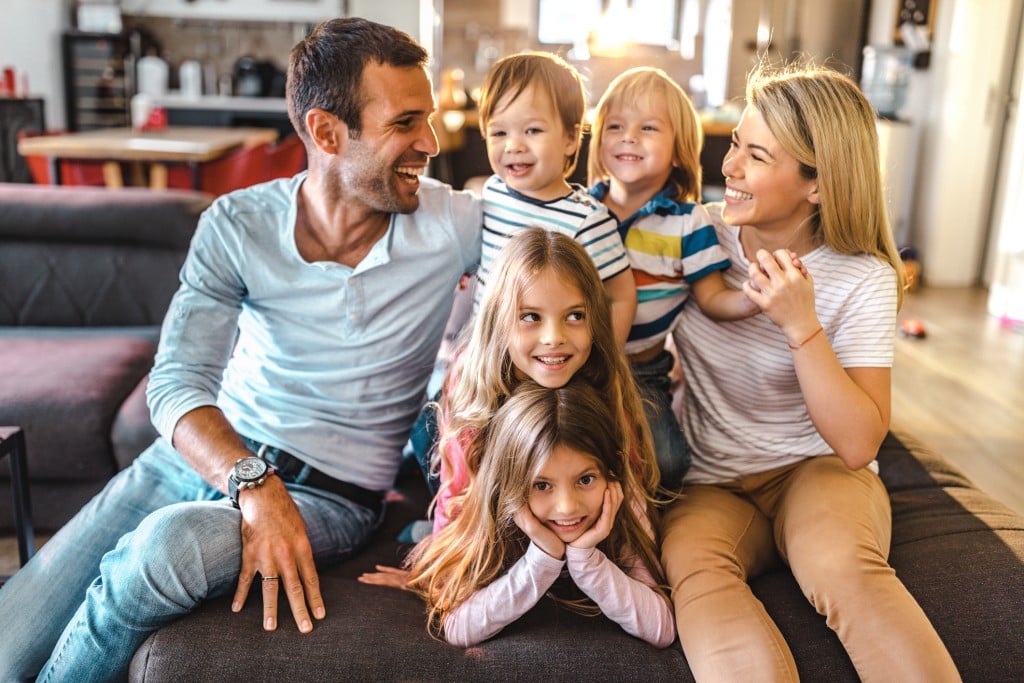Before having my little girl, I loved getting dressed up, doing a full face of makeup, slapping on at least two face masks a week, and prioritizing plenty of pampering time. These days, I’m putting in effort when I change from my “at home” leggings to my “fancy” leggings. My priorities have changed, but I still want to feel good, and to be honest, I sometimes get shocked when I pass an unexpected mirror. Who is this woman? She looks a little different than who I remember from those hazy pre-baby days. I no longer have the time to commit to my beauty regime like I used to. But what if having another baby (or many more) could actually help with anti-aging?
Can Having More Children Be the Fountain of Youth?
A study conducted in 2016 suggests that having more children might have anti-aging properties.1 The bags under my eyes beg to differ, but I was curious, so I took a closer look at the research. A study by Professor Neopmnaschy and post-grad researcher Barha found that the DNA in women who gave birth to more (five) children was affected. Those with more children had longer telomeres, the protective tips at the end of a DNA strand. These bits of our DNA are responsible for cell replication (and turnover) and longevity.
Researchers believe this is due to dramatic surges of the hormone Estrogen during pregnancy. Estrogen has antioxidant properties that protect telomeres from shortening. Once a telomere gets too short, it can no longer reproduce or replicate itself, which is a traditional sign of aging – we develop wrinkles or see changing texture in our skin and hair because the cells don’t keep “turning over” at the same rate anymore. We often see this in our hair and skin first, as they are areas in the body where cells reproduce more often.
Before you shout “sign me up” and start producing Brady Bunch quantities of children to reduce those crow’s feet, hold your horses. As always, with most things, there’s more to the story!
Turns Out, Having Support Helps
The study was also conducted in a Guatemalan community where women receive more intergenerational or community support in raising their children. So, it can’t be ruled out that better support during child-rearing years was also behind some of their youthfulness. The researchers suggested that women have more metabolic energy when they receive support and don’t have to raise children alone. Instead of chasing after children all day by themselves, picking up all the odd socks dotted around the house, or making dinners nobody wants to eat, their energy can be used to maintain tissue (skin, nails, hair, etc.) in the body, which helps with anti-aging.
On The Other Hand, Motherhood Can Be a Huge Stressor
Conversely, other research tells us that pregnancy can actually take a significant toll on our bodies.2 In some circumstances, telomeres in women with multiple children are shorter than in those with one or no children. When we are juggling the demands of family life, particularly if we are doing it alone or with little support, we can see increased physical and emotional stress levels. Stress impacts our immunity and general physical health (particularly high blood pressure) and is also shown to reduce the length of telomeres.3
So, while the science is out on this one, I’m going to run with the idea of additional support and the importance of self-care as a significant influencer on anti-aging and graceful aging. With that in mind, I’m off to sneak in five minutes of self-care! Who knew hiding in the pantry, scrolling through social media while cramming a biscuit into my mouth, could be so beneficial for my appearance? I can feel my wrinkles receding as we speak!











